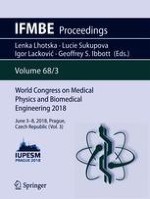2019 | OriginalPaper | Chapter
Gender Balance in Medical Physics—Lost in Transition?
Authors : Loredana G. Marcu, David Marcu
Published in: World Congress on Medical Physics and Biomedical Engineering 2018
Publisher: Springer Singapore
Activate our intelligent search to find suitable subject content or patents.
Select sections of text to find matching patents with Artificial Intelligence. powered by
Select sections of text to find additional relevant content using AI-assisted search. powered by
